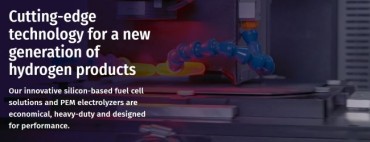SCOTTSDALE, AZ, Nov. 19 (Korea Bizwire) – Cupric Canyon Capital (“Cupric”) is pleased to announce that its wholly owned subsidiary, Khoemacau Copper Mining Pty. Limited (“KCM”), has completed the current phase of drilling on its Zone 5 deposit and has updated feasibility work for its assets in Botswana.
Timothy Snider, Cupric’s Chairman, said, “This most recent drilling and feasibility work has established Zone 5 as one of the most attractive new copper projects in the world. The resource that we have defined so far contains approximately 100 million tonnes of high grade copper/silver ore. Favorable geology and metallurgy, combined with both our recent acquisition of the nearby fully functional Boseto mill and a competent and supportive government, provide a clear path to begin production with very favorable capital intensity in 2018. We are also very excited about the numerous additional exploration targets we have identified on our expansive land position.”
Summary of Results
• Updated Resource
o The Zone 5 resource (JORC 2012 compliant) now totals an estimated 100.3 million tonnes of measured, indicated, and inferred ore grading 1.95% copper and 20 grams per tonne silver.
o Total contained metal includes 2.0 million tonnes of copper and 64 million ounces of silver.
o The strata-bound orebody with an average width of 10 meters, a strike length of 4.2 kilometers, a dip of 56 to 60 degrees and competent stratigraphy lends itself to low- cost underground mining with no back-fill required.
o The orebody, in which ore is first encountered at 70 meters below the surface, remains open at depth and along strike. Recent deep drilling at 1,200 meters below surface continues to show high grades and wide intercepts.
• Near Term Production, Low Capital Development Alternative – Zone 5
In order to establish a plan for near term initial production from this developing copper district, a feasibility study has been completed that demonstrates the viability of utilizing the recently acquired Boseto mill to process Zone 5 ore. Capital expenditures of $350 million are required to (a) develop three interconnected underground mines along strike in the Zone 5 orebody to extract 10,000 tonnes of ore per day, (b) construct an ore transportation system over a distance of approximately 30 kilometers, and (c) expand the Boseto mill. This operation will produce annually about 50,000 tonnes of copper and 1.4 million ounces of silver contained in concentrate grading 42% copper. The mine life is 27 years. C-1 cash production cost, net of by-product credits, is estimated to be in the range of $1.05 to $1.10 per pound of copper, which is in the lowest quartile of the industry cost curve. Capital intensity of $6,460 per tonne of annual copper equivalent production is about half of the industry average for brownfield projects of $12,000.
• Maximum Sustainable Production Development Alternative – Zone 5
In addition, a prefeasibility study has been completed which demonstrates that production of 16,800 tonnes of ore per day from six interconnected underground mines along strike in the Zone 5 orebody is achievable. Processing of the ore will be accomplished either with installation of new mill capacity at the mines capable of handling the entire mine output or a combination of new capacity and the Boseto mill. The specific configuration will depend on the location at which additional resources are developed by ongoing drilling. Total project capital in either case is approximately $600 million. The resulting operation over a 16 year mine life will produce annually about 87,000 tonnes of copper and 2.5 million ounces of silver contained in concentrate grading 42% copper. C-1 cash production costs, net of by-product credits, are estimated to be in the range of $0.90 to $0.95 per pound of copper. Capital intensity of $6,500 per tonne of copper equivalent annual production is about half of industry average for brownfield projects of $12,000.
• Additional Resources
A number of additional high-grade mineral targets in various stages of development exist on the 4,000 square kilometers of concessions controlled by KCM. These targets are not included in these resource estimates and studies, but they represent substantial potential for further expansions. Exploration drilling is currently underway on very promising targets. We envision this district ultimately being developed to a sustainable production rate of 25,000 to 30,000 tonnes of ore processed per day with copper output in the range of 125,000 to 140,000 tonnes annually.
Background
In 2013 Cupric entered the Kalahari Copper Belt with the acquisition of Hana Mining Limited and its Botswana operating subsidiary (later renamed Khoemacau Copper Mining Pty. Limited). In mid- 2015, after the discovery and substantial definition of the Zone 5 resource, KCM acquired the neighboring Discovery Copper Botswana (“Discovery”) assets, which include the fully functional Boseto mill, water system, and associated infrastructure, as well as several prospective mineral development and exploration targets.
Drilling conducted on the Zone 5 resource has totalled over 194,000 meters during the period 2013 through 2015. Extensive examination of the geology, mineralogy, rock mechanics and metallurgy of the orebody has been conducted and included in the various studies which support the mine design and production plans. The conditions of the orebody facilitate the development of an efficient, highly mechanised and low cost underground mine. The sedimentary rock-hosted, stratiform copper deposit is similar to others in the African copper belts.
The Boseto mill, its associated water well field and other infrastructure were operated by Discovery from 2012 until late 2014. Cupric/KCM’s due diligence of the mill prior to its acquisition found it to be well designed and constructed. During its history, the mill generally operated as designed when ore was available. Some circuit modifications will be required to accommodate the mineralogical character of Zone 5 ore. Additionally, simple expansion of the mill raising its throughput from its nameplate capacity of 8,200 tonnes per day to 10,000 tonnes per day will allow for the accelerated, capital efficient development of the Zone 5 resource. However, additional milling capacity in the district is likely to be required as Zone 5 mining grows to its potential and as other copper resources are developed.
KCM has secured the necessary mining licenses, gained approval of an environmental and social impact assessment, and obtained other permits from the Government of Botswana. Also, all of the necessary water resources and access roads to support the development of Zone 5 have been identified.
Additional information on Cupric, KCM, Zone 5, and the various assets can be accessed on Cupric’s website, www.cupriccanyon.com.
About Cupric
Cupric was formed in 2010 with a goal to acquire undeveloped copper assets with a known resource. The management of Cupric is comprised of former executive, technical, financial, and operational leadership of major mining companies, including Phelps Dodge Corporation and its successor, Freeport McMoRan Copper & Gold Inc. (which acquired Phelps Dodge in 2007). The Cupric team has decades of experience in the exploration, development, construction and operation of world-class open pit and underground mines, processing facilities, and infrastructure.
CONTACT INFORMATION
• For further information, contact:
Rodney A. Prokop
Chief Financial Officer
Cupric Canyon Capital
Scottsdale, Arizona
Tel: +1 (480) 607 7030
Email: ccc@cupriccanyon.com
Website: www.cupriccanyon.com
Source: Cupric Canyon Capital via Marketwired








